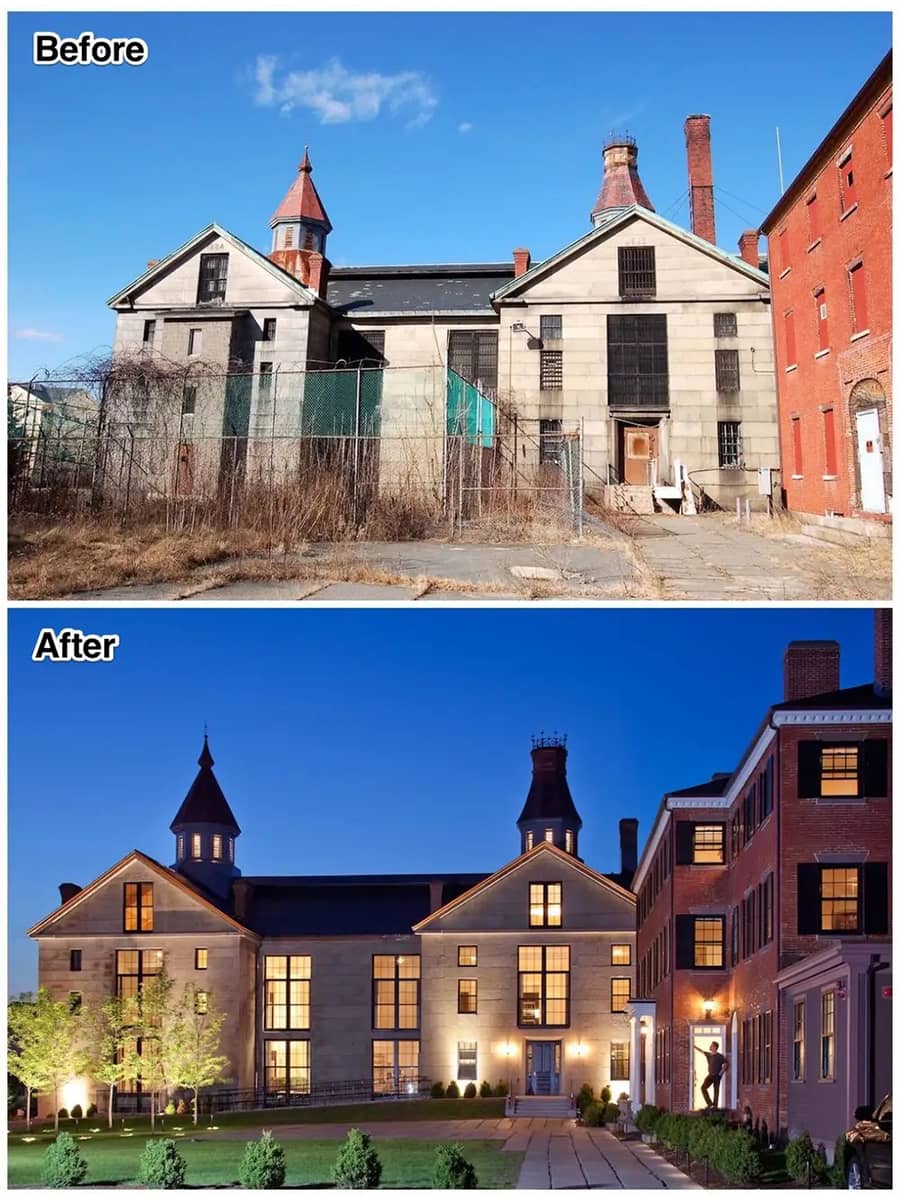Our most treasured structures can deteriorate over time if they are not repaired. The Federal Historic Tax Credit (HTC) is the United States government’s largest investment in the historic preservation of all types of decaying buildings, from theaters to prisons to hotels.
Since 1976, when the HTC was permanently enshrined in the federal tax code, it has leveraged over $78 billion to restore over 41,270 buildings across the United States. Private investors who choose to rehabilitate a historic structure receive a 20 percent tax credit.
The National Trust for Historic Preservation is a non-profit organization based in Washington, DC that works with both the private and public sectors to protect and restore these structures.
The organization shared images of a few of the most significant HTC projects in recent years. They’re right here.
The Salem Jail in Salem, Massachusetts, was renovated for $10.5 million

The Salem Jail first opened its doors in 1813. In 1906, Harry Houdini staged an escape there, and in the 1960s, Albert DeSalvo, also known as the Boston Strangler, served time there.
Living conditions were so bad in 1984 — detainees used chamber pots for bathrooms, according to Curbed — that a few inmates sued the county, and the jail closed in 1991. Until then, it was the oldest active penitentiary in the United States.
The building sat vacant for the next two decades before being transformed into 23 luxury apartments and a restaurant by developers. According to the National Trust for Historic Preservation, the $10.5 million project took advantage of both state and federal tax credits.
The Ghost Ranch Lodge in Tucson, Arizona, was renovated for $22 million

The Ghost Ranch Lodge, which dates back to the 1940s, was one of the first motels in the United States to use a motor court concept (in other words, it was located on the side of the road). The skull signage for the Spanish Revival-style lodge was designed by Georgia O’Keefe.
After a $22 million renovation, it was converted into 112 affordable apartments for senior and disabled tenants in 2007.
The Warren Cultural Center in Greenfield, Iowa, was renovated for $6.2 million

The Warren Cultural Center, formerly known as the E.E. Warren Opera House, first opened its doors in 1896. It attracted theatrical troupes, musical performers, and local acts, but interest in the building waned over the course of the century, with the exception of a few shops that remained until 1990.
In 2012, a $6.2 million restoration restored the auditorium and other rooms to their original splendor. The structure is now a multi-use hotel that hosts meetings, receptions, performances, and overnight guests.
Follow us for more abandoned stuff on Pinterest
The American Brewery in Baltimore, Maryland, was renovated for $22.5 million

The five-story structure was built in 1887 as part of a five-acre brewery complex. The American Brewery, once a landmark in East Baltimore, was forced to close in 1920 due to prohibition. The building deteriorated over the next few decades and was even used as a backdrop in HBO’s “The Wire.”
Humanim Inc., a nonprofit social service company, moved in in 2009 after $22.5 million in renovations. According to The Baltimore Sun, the building encourages future community and economic development in the area due to its central location and architectural quality.
The Boyle Hotel in Los Angeles has undergone a $24.6 million renovation

This brick structure, built in 1889, was originally used as a luxury hotel with shops. However, it deteriorated over time, and retailers gradually left.
The Boyle Hotel underwent a $24.6 million rehabilitation in the late aughts, which included seismic reinforcement, a new roof, floors, doors and fixtures, kitchens, and bathrooms. It reopened in 2012 as 51 affordable housing apartment units with a few shops on the ground floor.
Tennessee Theatre in Knoxville has undergone a $30 million renovation

The Tennessee Theatre, which opened in 1928, is distinguished by its Spanish-Moorish architecture, which includes decorative tile work and a horseshoe arch that frames the stage. It showed movies in downtown Knoxville for nearly a half-century before closing in 1977.
It became a performance arts center after an 18-month, $30 million rehabilitation in the early 2000s. The original ticket booth, foyer, grand lobby, auditorium, and Wurlitzer organ in the building were all restored.



